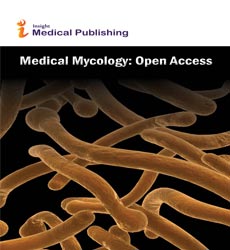Abstract
Breeding new Cordyceps militaris strain using mating type molecular markers
An entomopathogenic Cordyceps militaris is being studied and cultivated as a medicinal mushroom having many valuable biological and pharmaceutical activities substituting C. sinensis which has been traditionally used as a Chinese herb medicine. C. militaris can be cultivated artificially. As a bipolar heterothallic fungus C. militaris has two strains of compatible mating types, MAT1 and MAT2 which are determined by the single mating type locus MAT1 consisting of two dissimilar alleles called idiomorphs MAT1-1 and MAT1-2 of MAT1 and MAT2, respectively. They can be differentiated by crossing, fruiting body formation ability and the production of perithecia. Such process is very laborious and time consuming to carry out but molecular markers of these mating types reduces the amount of effort required for the crossing process. In this study, two opposite mating types were assayed using two sets of primers specific for C. militaries, which were amplified a 191-bp fragment for MAT1-1 and 233-bp fragment for MAT1-1. After crossing of two compatible mating types F1 hybrids resulted in well-developed perithecial fruiting bodies and their crossings were confirmed by the multiplex PCR assays for the rapid and specific detection of both MAT1-1 and MAT1-2. In the breeding process of new C. militaris mushroom, single ascospores were isolated and examined their mating types, mycelial growth, mycelial density, and selected isolates were crossed and hybrids were produced showing high quality fruiting bodies on artificial media. The stromata of new strain ‘Chungnam 12’ were club-shaped and bright orange-red. Its height was 6.7 cm and the cordycepin content was 0.33% on average. The new strain showed 11% higher yield than ‘Yedang 3’ with producing firmer fruit bodies. The optimum temperature for mycelial growth was 22~250C and the optimum temperature for stroma development was 18~220C. Fruiting bodies were begun to produce 43 days later after inoculation. This new cultivar may serve as a valuable one for artificial cultivation and industrial-scale production of C. militaris.
Author(s):
Miae Lee and Byungjoo Lee
Abstract | PDF
Share this

Google scholar citation report
Citations : 164
Medical Mycology: Open Access received 164 citations as per google scholar report
Abstracted/Indexed in
- Google Scholar
- China National Knowledge Infrastructure (CNKI)
- Directory of Research Journal Indexing (DRJI)
- WorldCat
- Publons
- Geneva Foundation for Medical Education and Research
- Secret Search Engine Labs
Open Access Journals
- Aquaculture & Veterinary Science
- Chemistry & Chemical Sciences
- Clinical Sciences
- Engineering
- General Science
- Genetics & Molecular Biology
- Health Care & Nursing
- Immunology & Microbiology
- Materials Science
- Mathematics & Physics
- Medical Sciences
- Neurology & Psychiatry
- Oncology & Cancer Science
- Pharmaceutical Sciences
